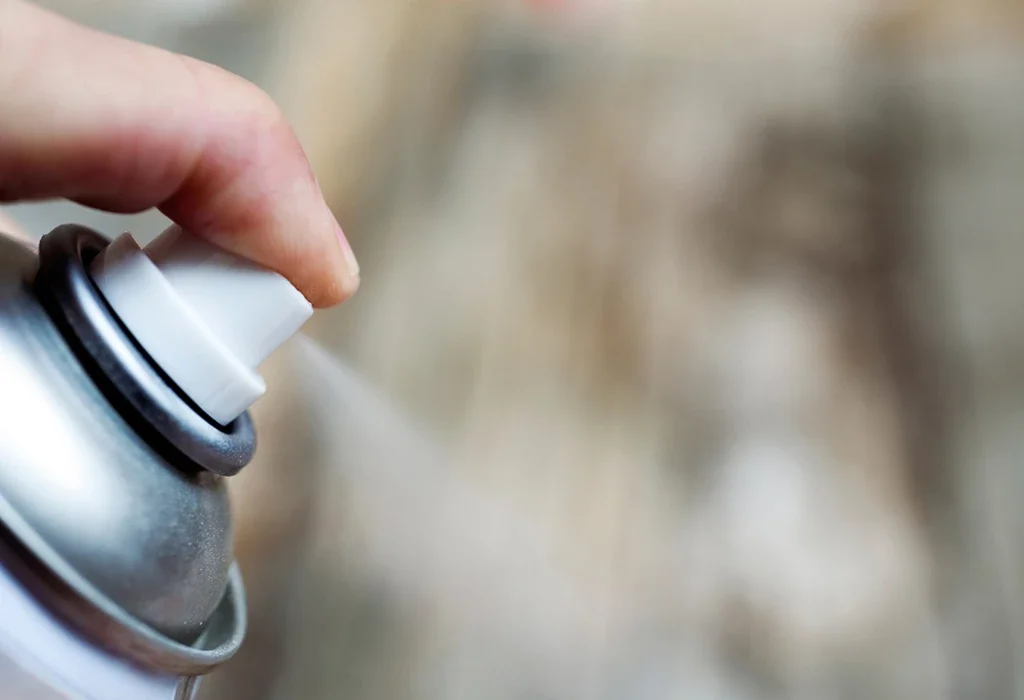
Spray adhesive is a versatile and useful tool for many projects, from crafting to construction. However, using it can be tricky, and mistakes can be costly.
To avoid common pitfalls and ensure successful outcomes, it’s important to follow a few dos and don’ts of spray adhesive usage. Here are some helpful tips to keep in mind:
Table of Contents
Do:

Source: loctiteproducts.com
- Do read the instructions – Before you start using spray adhesive, read the label carefully. Different brands and types of adhesive have different application methods and drying times. Make sure you understand the instructions and follow them exactly.
- Do use in a well-ventilated area – Spray adhesive contains volatile organic compounds (VOCs), which can be harmful if inhaled in large quantities. To avoid health risks, use spray adhesive in a well-ventilated area, such as outdoors or in a large, open room with windows.
- Do a test on a small area first – Before applying spray adhesive to your entire project, test it on a small, inconspicuous area. This will help you ensure that the adhesive will not damage or discolor your materials.
- Do use a steady, even hand – When spraying adhesive, use a steady, even hand. Hold the can about 6-8 inches away from the surface and move it in a sweeping motion. Avoid spraying too close or too far away, as this can cause uneven application.
- Do wait for the adhesive to dry – After spraying, allow the adhesive to dry completely before attaching the materials. This can take anywhere from a few minutes to several hours, depending on the type of adhesive and the materials being bonded. Read the label to determine the appropriate drying time.
Don’t:

Source: amazon.com
- Don’t use too much adhesive – Using too much adhesive can cause the materials to become saturated and not stick properly. This can also cause the materials to warp or buckle. Use only a thin, even layer of adhesive.
- Don’t use on materials that can melt – Some spray adhesives contain solvents that can melt certain materials, such as polystyrene foam or certain types of plastic. Always check the label to make sure the adhesive is safe for your materials.
- Don’t apply to damp or dirty surfaces – Spray adhesive works best on clean, dry surfaces. Moisture or dirt can interfere with the bonding process and cause the materials to separate.
- Don’t try to reposition materials after applying adhesive – Once the materials have been bonded with spray adhesive, it’s difficult to reposition them. Trying to do so can cause the materials to tear or stretch.
- Don’t forget to clean up – After using spray adhesive, make sure to clean up any excess adhesive from your work area and tools. Use a solvent, such as acetone or rubbing alcohol, to remove any adhesive residue.
Conclusion
By following these dos and don’ts of spray adhesive usage, you can avoid common mistakes and ensure a successful project outcome.
Remember to read the label carefully, use in a well-ventilated area, test on a small area first, use a steady hand, wait for the adhesive to dry, use only a thin layer of adhesive, avoid materials that can melt, apply only to clean, dry surfaces, avoid repositioning, and clean up thoroughly. With these tips in mind, you’ll be able to achieve strong, long-lasting bonds with spray adhesive.







